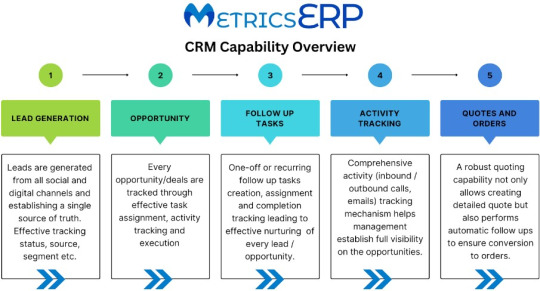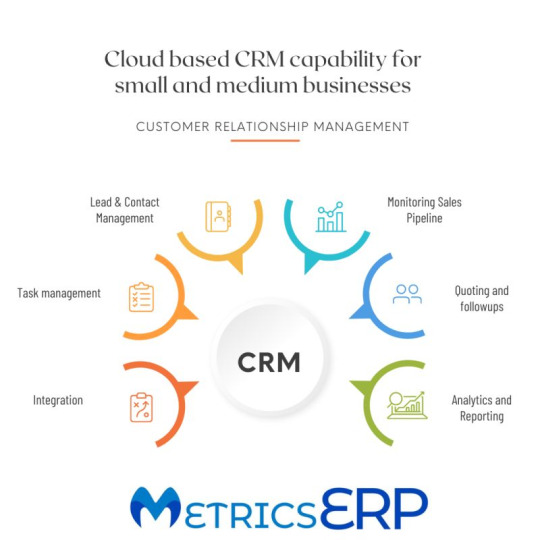#E-commerce customer retention strategies
Explore tagged Tumblr posts
Text
How Product Recommendations in E-commerce is important to Boost Engagement & Sales - Wizzy.ai
Unleash the power of tailored product recommendations in e-commerce! Discover how to boost engagement and maximize sales with proven strategies. Learn why recommendations are vital for success in today’s digital marketplace. Optimize your Ecommerce store with seamless site search functionality.
#E-commerce recommendations#Product Recommendations in E-commerce#eCommerce product recommendations#AI product recommendations for eCommerce#personalized product recommendations#best product recommendation strategies#how to optimize product recommendations#AI-driven eCommerce recommendations#eCommerce recommendation systems#best practices for product recommendations#Product recommendation systems#Personalized shopping experience#Personalized product suggestions#AI-driven recommendations#E-commerce customer retention strategies#Implementing recommendation engines#Benefits of product recommendations
0 notes
Text
Social Media: The New Frontier for Customer Engagement and Retention
In today’s digital age, social media has transformed from a simple communication tool into a powerful platform for businesses to engage with their customers like never before. "Social Media: The New Frontier for Customer Engagement and Retention" highlights the significant role social media plays in fostering meaningful interactions, building brand loyalty, and ultimately driving growth. As…
#best practices for brand management#Branding strategies for small businesses#building brand loyalty#business growth strategies#corporate social responsibility#creating a strong brand identity#Customer#customer relationship management#digital marketing for startups#e-commerce tips for businesses#Engagement#Frontier#how to scale your business.#how to start a successful business#importance of social media for businesses#influencer marketing for brands#Media#Retention#small business funding options#Social#top business trends 2024
0 notes
Text
Harnessing the Power of Holiday Marketing for Your Brand
🎄 Ready to elevate your holiday marketing game? Discover value-driven strategies that delight customers & boost sales! 🎁 Dive in here ➡️ #HolidayMarketing #Growth
Harnessing the Power of Holiday Marketing for Your Brand Written By: that Hannah Jones Time to Read: 7 minutes The holiday season is a business owner’s playground, full of opportunities to connect, engage, and drive sales. However, capturing the magic of the season requires more than discounts and holiday-themed social media posts. It’s about creating experiences, adding value, and embracing…
#Audience Engagement#brand exclusivity#business branding for holidays#business growth during holidays#Content marketing#Content Strategy#creating emotional connections with customers#customer engagement#customer loyalty#customer retention during holidays#digital marketing#festive branding ideas#festive customer engagement#gift ideas for clients#Hannah Jones#holiday exclusivity strategies#holiday marketing#holiday marketing for e-commerce#holiday marketing planning#holiday marketing ROI#in-store experiences#local events marketing#loyalty points holiday boost#loyalty programs#luxury brands marketing strategies#personalized branding#personalized customer experiences#retail holiday promotions#seasonal marketing tips#seasonal marketing trends
0 notes
Text
What is the impact of artificial intelligence on e-commerce?
Understanding the influence of artificial intelligence (AI) on e-commerce is essential in today’s digital landscape. AI technologies are reshaping how businesses operate online, from personalized shopping recommendations to efficient inventory management. This article delves into the multifaceted impact of AI on e-commerce, exploring its benefits and transformative potential.
Know more https://www.pcdoctorsnet.com/what-is-the-impact-of-artificial-intelligence-on-e-commerce/

#What is the impact of artificial intelligence on e-commerce#ai#artificial intelligence#ecommerce website design#ecommerce#digital marketing#usa#seo#seo services#digital marketing services#social media marketing#best digital marketing company#seo company#marketing#business#digital marketing company#digital marketing agency#supply chain management#supply chain#inventory management#PC Doctors .NET#Strategies#payment processing#customer retention
0 notes
Text
In the ever-evolving landscape of digital marketing, the fusion of Search Engine Optimization (SEO) and Digital Public Relations (PR) emerges as a powerhouse strategy.
This blog explores how these two dynamic elements can work harmoniously, delivering unparalleled brand amplification. Join us on this journey as we unravel the intricacies of SEO and Digital PR synergy, guided by the expertise of Labhanya Technologies, a forward-thinking digital marketing firm.
THE CONVERGENCE OF SEO AND DIGITAL PR
Defining SEO and Digital PR
Digital marketing is a multifaceted realm, with SEO and Digital PR serving as pivotal components for online visibility and brand reputation. SEO revolves around optimizing digital content to secure favorable search engine rankings, while Digital PR focuses on relationship-building and managing brand perceptions. Recognizing the potential synergy between these strategies is crucial for a comprehensive digital marketing approach.
A Unified Approach
A forward-thinking digital marketing strategy involves integrating SEO and Digital PR seamlessly. This approach ensures a holistic marketing solution that leverages the strengths of both strategies. Success stories from various industry players demonstrate the impact of uniting SEO and Digital PR for brand amplification.
The Evolving Digital Landscape
Understanding the ever-changing digital landscape is key to adapting SEO and Digital PR strategies. From the rise of new platforms to changes in consumer behavior, businesses need to stay agile. This section explores the importance of staying ahead of trends and being adaptable in the dynamic digital ecosystem.
The digital landscape is continually evolving, with new platforms emerging and consumer behaviors shifting. Staying abreast of these changes is essential for businesses aiming to remain competitive in the digital space. It’s not merely about adapting to current trends but also anticipating future shifts, ensuring that the SEO and Digital PR strategy remains relevant and effective.
THE POWER OF SEO: ELEVATING VISIBILITY AND TRAFFIC
Keywords and Content Optimization
At the core of SEO lies strategic keyword usage and content optimization. Understanding user intent and incorporating relevant keywords ensures that digital content becomes more discoverable. Crafting SEO-friendly content is a skill that enhances visibility and engagement across various online platforms.
Technical SEO and Website Performance
Technical SEO addresses the backend aspects of a website, optimizing elements such as site speed and mobile responsiveness. Navigating technical intricacies ensures a seamless user experience, contributing to improved search engine rankings. The focus on website performance enhances both user satisfaction and search engine visibility.
Link Building for Authority
Link building establishes a website’s authority in the digital realm. Ethical and effective link-building strategies contribute to improved search engine rankings and credibility. The importance of quality backlinks is recognized across industries, shaping a website’s position in online searches.
Mobile Optimization and Voice Search
In the era of mobile devices and voice-activated assistants, optimizing for mobile and voice search is paramount. This section explores the significance of mobile-friendly websites and strategies for adapting to the increasing prevalence of voice-activated search.
The mobile landscape has become ubiquitous, with users accessing digital content on various devices. Optimizing websites for mobile devices is no longer optional but a necessity for maintaining a positive user experience and pleasing search engines. Additionally, the rise of voice-activated search emphasizes the need for content tailored to spoken queries, requiring businesses to adapt their SEO strategies accordingly.
DIGITAL PR: BUILDING TRUST AND AUTHORITY
Storytelling and Brand Narratives
Digital PR revolves around crafting compelling brand stories that resonate with the audience. These stories go beyond traditional press releases, aiming to build emotional connections. Successful Digital PR strategies establish trust and loyalty, essential components for a brand’s success.
Building Relationships with Influencers
In the age of social media, influencers hold considerable power in shaping opinions. Leveraging influencer partnerships is a valuable strategy for brand amplification. Building meaningful relationships with influencers results in increased brand exposure and positive associations within target audiences.
Crisis Management and Reputation Repair
Digital PR plays a critical role in managing crises and repairing reputations. A proactive approach to crisis management ensures that brands are prepared to navigate challenges seamlessly. Real-world examples showcase success in steering brands through crises, reinforcing the importance of a robust Digital PR strategy.
Leveraging Social Media for PR
Social media is a potent tool for Digital PR, providing platforms for real-time interactions with the audience. This section explores strategies for utilizing social media to amplify PR efforts, engage with the audience, and build a positive brand image.
The influence of social media on brand perception cannot be overstated. Digital PR strategies that leverage social platforms for real-time engagement, storytelling, and crisis management can significantly impact a brand’s reputation. Building relationships with influencers adds an authentic touch to brand messaging, increasing reach and credibility.
THE INTERSECTION OF SEO AND DIGITAL PR
Content Syndication and Amplification
The intersection of SEO and Digital PR lies in content syndication and amplification. Merging SEO-optimized content with Digital PR strategies ensures wider visibility. Innovative content syndication techniques amplify brand messages, contributing to increased organic search rankings and overall brand visibility.
Strategic Link Building Through Digital PR
Digital PR becomes a potent tool for strategic link building. Integrating PR efforts secures high-quality backlinks, enhancing not only SEO but also brand credibility. The synergy between link building and PR amplifies a brand’s online presence, establishing it as an authoritative voice within its industry.
Collaborative Campaigns
Collaboration between SEO and Digital PR teams can lead to powerful campaigns. This section explores examples of successful collaborative campaigns, emphasizing the importance of aligning SEO and PR goals for maximum impact.
The collaborative efforts of SEO and Digital PR teams unlock powerful possibilities. By aligning strategies, businesses can create campaigns that resonate across search engines and social platforms. The strategic use of backlinks, coupled with impactful storytelling, enhances a brand’s authority and visibility in the digital landscape.
MEASURING SUCCESS: METRICS AND ANALYTICS
SEO Metrics
Measuring the success of SEO involves tracking key performance indicators. Utilizing a range of tools for SEO analytics ensures that businesses can quantify their return on investment. Tangible outcomes include increased organic traffic, improved search engine rankings, and enhanced visibility.
Digital PR Analytics
Digital PR success is quantifiable through various metrics. Utilizing analytics measures the impact of PR efforts on brand reputation. Positive PR is correlated with improved online visibility, showcasing the value of a well-executed Digital PR strategy in achieving brand objectives.
CONVERSION TRACKING AND ROI
Beyond visibility metrics, businesses must track conversions and return on investment. This involves understanding how SEO and Digital PR efforts contribute to lead generation, sales, or other desired outcomes. Effective tracking allows for informed decision-making and optimization of future strategies.
Measuring success goes beyond tracking rankings and likes. Understanding the impact on brand reputation, lead generation, and overall return on investment is crucial. Integrated analytics platforms provide a consolidated view, allowing businesses to assess the combined impact of SEO and Digital PR efforts on their bottom line.
THE FUTURE OF SEO AND DIGITAL PR SYNERGY
Emerging Trends
The future of digital marketing holds exciting possibilities, with emerging trends such as AI and machine learning shaping SEO and Digital PR strategies. Staying ahead of industry trends and adapting strategies ensures a forward-thinking approach in the dynamic digital landscape.
Personalization and User Experience
As personalization becomes integral to user experiences, tailoring SEO and PR efforts for personalized interactions becomes essential. The emphasis on user-centric strategies establishes a foundation for long-term brand loyalty and success.
Ethical SEO and PR Practices
In an era of heightened awareness, ethical practices in both SEO and PR are crucial. Businesses should prioritize transparency, authenticity, and user privacy. This section delves into the importance of ethical considerations in shaping the future of digital marketing.
The future of SEO and Digital PR is shaped by emerging technologies and changing consumer behaviors. Businesses that embrace personalization, voice search optimization, and ethical practices are poised for success in the evolving digital landscape. Integrating AI technologies ensures a more efficient and adaptive approach to marketing strategies.
THE BOTTOM LINE
In conclusion, the fusion of SEO and Digital PR is more than a strategy; it’s a dynamic force reshaping the digital marketing landscape. Labhanya Technologies’ commitment to innovation and expertise in both realms showcases the immense potential of a unified approach. As we step into the future, the synergy between SEO and Digital PR is set to redefine brand amplification, and those who embrace this collaboration will undoubtedly lead the way in the digital era.
Don’t hesitate to reach out to us! If you’re calling from within India, you can connect with us by dialing +91 8368521254. For international inquiries or if you’re contacting us from outside India, feel free to reach us at +1 719 999 0082. We look forward to hearing from you!
YOU CAN ALSO READ: HOW TO IMPROVE YOUR CTR BY LISTENING TO YOUR AUDIENCE?FOLLOW US: Labhanya Technologies pvt. ltd.
#digital marketing solutions#data analytics#content marketing#e-commerce strategies#influencer collaboration#local seo#mobile marketing#ai in marketing#chatbot integration#customer retention
0 notes
Text

In the fast-paced world of digital marketing, businesses are constantly seeking innovative ways to reach their target audience and drive growth. E-commerce has emerged as a powerful tool that not only expands the reach of businesses but also enhances customer experience. In this comprehensive guide, we will explore the dynamic realm of e-commerce and how it can elevate your business in the digital marketing landscape.
Do Read: https://ennobletechnologies.com/e-commerce/e-commerce-solutions/
#Conversion Rate Optimization#Cross-Platform Shopping#Customer Retention Strategies#Digital Payment Solutions#Digital Storefronts#E-Commerce Analytics#E-Commerce Branding#E-commerce content marketing#E-Commerce Data Analysis#E-Commerce Marketing#E-Commerce Optimization#E-Commerce Platforms#E-Commerce Sales Funnels#e-commerce SEO services#E-Commerce Solutions in Digital Marketing#E-Commerce Website Development#Mobile Shopping Apps#Online Retail Strategies#Payment Gateway Integration#SEO for E-Commerce#Shopping Cart Integration#Social Commerce
1 note
·
View note
Text
The Power of Marketing: Driving Success in the Digital Age
The average marketing spend as a percentage of company revenue has increased from 6.4% to 9.5% across almost all industries.The power of marketing drives success in the digital age In an ever-evolving business landscape, marketing has emerged as a driving force for success in the digital age. In this era of constant connectivity and technological advancement, effective marketing has become more important than ever. Unlocking unprecedented access is the key to reaching a global audience with the click of a button. Digital marketing has changed the way companies interact with consumers. Through social media, search engine optimization and email campaigns, companies can now engage directly with their target audience, gaining valuable insights into their preferences and behavior This data-driven approach enables businesses to change their strategies, and create personalized experiences that match customers. Additionally, digital marketing allows businesses of all sizes to play equally. Startups and small businesses can now compete with larger businesses through cost-effective online advertising and innovation. Content marketing, influencer collaborations, and viral campaigns can go global in a matter of hours, creating a ripple effect on brand awareness and consumer loyalty The Internet has transformed consumer decision making , where potential buyers research products and read online reviews before buying. These changes make it important for companies to establish a strong online presence and maintain a good reputation. Additionally, business-to-business tools simplify manufacturing processes, allowing companies to focus on strategic planning and raw material development. Personalization, customer segmentation and automated customer service have been key differentiators to gain competitiveness
In conclusion, the power of marketing in the digital age cannot be underestimated. It has changed how businesses interact with customers, driving unprecedented consumption levels. Adopting digital marketing strategies allows businesses to adapt to the changing times, build brand loyalty, and achieve incredible success in the hyper-connected world we live in today.
#Marketing Strategy#Digital Marketing#Success in Marketing#Digital Age#Online Advertising#Brand Awareness#Social Media Marketing#Customer Engagement#Content Marketing#Data-Driven Marketing#Customer Acquisition#E-commerce#SEO (Search Engine Optimization)#Customer Retention#Email Marketing#Mobile Marketing
0 notes
Text
E-Commerce Trends for 2023: The Future of Online Shopping

The e-commerce industry has been evolving rapidly over the past few years, driven by technological advances and changing consumer behaviors. As we move into 2023, this pace of change is set to continue, offering exciting opportunities for online retailers willing to innovate and adapt. Let's explore the key trends that will shape the e-commerce landscape in 2023.
1. The Rise of Social Commerce
Social commerce, the integration of e-commerce into social media platforms, is set to dominate in 2023. Social media giants like Facebook, Instagram, and Pinterest have rolled out shopping features, allowing businesses to sell directly through their platforms. This blurs the line between socializing and shopping, providing a seamless and engaging shopping experience.
Optimizing for Social Commerce
As social commerce grows, businesses should optimize their social media profiles for sales, using high-quality images, detailed product descriptions, and easy checkout processes. Engaging with customers on these platforms, through comments, messages, and user-generated content, will also be key to success.
Furthermore, businesses should explore integrating chatbots into their social commerce strategy. These AI-powered assistants can provide customer service, answer queries, and even facilitate transactions, providing a more personalized shopping experience.
2. Sustainability Takes Center Stage
More consumers are considering the environmental impact of their purchases. They're seeking out brands that prioritize sustainability, from their products to their packaging and delivery methods. This trend towards "conscious consumerism" is expected to grow in 2023, pushing more e-commerce businesses to adopt sustainable practices.
Embracing Sustainability in E-commerce
Brands can appeal to conscious consumers by offering eco-friendly products, using sustainable packaging, offsetting carbon emissions, and showcasing their commitment to social and environmental causes. Businesses should communicate their sustainability efforts transparently and authentically, as consumers can be skeptical of "greenwashing".
Additionally, businesses could explore circular economy models, which aim to eliminate waste and promote the continual use of resources. This could involve offering product take-back programs, refurbishing old products, or creating products from recycled materials.
3. AI and Machine Learning Enhance Personalization
Artificial Intelligence (AI) and Machine Learning (ML) technologies are becoming increasingly sophisticated, enabling highly personalized shopping experiences. These technologies can analyze a customer's behavior and preferences to provide personalized product recommendations, content, and offers.
Leveraging AI and ML in E-commerce
In 2023, expect more e-commerce businesses to leverage AI and ML for personalization, improving customer engagement and conversion rates. However, they must do so responsibly, ensuring they respect customer data privacy.
AI and ML can also be used to improve other aspects of the e-commerce experience. For instance, AI chatbots can provide personalized customer service, while ML algorithms can optimize inventory management and predict future sales trends.
4. Voice Commerce Grows in Popularity
With the rise of smart speakers like Amazon's Echo and Google Home, more people are using voice commands to do their shopping. This trend is expected to continue in 2023, with more e-commerce businesses optimizing their sites for voice search.
Optimizing for Voice Commerce
To tap into the voice commerce trend, businesses should ensure their website is voice-search friendly. This involves using natural language in their content and focusing on long-tail keywords, as voice searches tend to be longer and more conversational than text searches.
Businesses should also consider developing their own voice apps, or "skills", for smart speakers. These could allow customers to check their order status, browse products, or make a purchase, all through voice commands.
5. Augmented Reality Enhances Online Shopping
Augmented Reality (AR) offers a solution to one of the main challenges of online shopping: not being able to see or try products in person. AR technology allows customers to visualize products in their own environment, whether it's trying on clothes, testing out makeup, or seeing how furniture looks in their home.
Integrating AR into the Shopping Experience
As AR technology becomes more accessible, expect more e-commerce businesses to incorporate it into their online shopping experience in 2023. Businesses can use AR to provide virtual try-ons, product demonstrations, or interactive product visualizations.
But AR isn't just for product visualization. It can also be used to create engaging marketing campaigns, like interactive product catalogs or AR treasure hunts. Moreover, AR can enhance the in-store shopping experience for omnichannel retailers, allowing customers to access additional product information, reviews, or personalized recommendations.
6. Mobile Shopping Continues to Dominate
Mobile commerce, or m-commerce, has been growing rapidly, with more people using their smartphones to shop online. This trend is set to continue in 2023, making it crucial for e-commerce businesses to have a mobile-friendly website or app.
Optimizing for Mobile Commerce
A mobile-friendly shopping experience includes fast loading times, easy navigation, secure payment options, and a smooth checkout process. Google's shift to mobile-first indexing also makes mobile optimization a must for SEO.
Businesses should also consider developing a mobile app, which can provide a more personalized and engaging shopping experience than a mobile website. Apps can offer features like push notifications, loyalty programs, and offline browsing, and they typically have higher conversion rates than mobile websites.
7. The Growth of Omnichannel Retail
Omnichannel retail, which provides a seamless and integrated shopping experience across multiple channels, continues to be a significant trend in 2023. It's not just about being present on multiple channels, but ensuring those channels work together cohesively.
Excelling in Omnichannel Retail
Customers might discover a product on social media, research it on a brand's website, and then purchase it through the brand's app. They expect the transition between these channels to be seamless, with their preferences and shopping history carried over.
To succeed in omnichannel retail, e-commerce businesses need to have a deep understanding of their customer journey across all touchpoints and ensure they provide a consistent and personalized experience. This involves having a unified view of customer data, enabling real-time personalization and cross-channel marketing campaigns.
8. The Evolution of Payment Options
As e-commerce evolves, so do the ways customers can pay for their purchases. Digital wallets like Apple Pay and Google Pay provide a fast and secure way to pay, and their use is expected to grow in 2023. Cryptocurrencies, led by Bitcoin, are also being increasingly accepted by e-commerce businesses.
Adapting to New Payment Options
Offering a variety of payment options can enhance the customer experience and potentially increase conversion rates. However, e-commerce businesses must ensure they have the necessary security measures in place to protect customer data.
In addition to digital wallets and cryptocurrencies, businesses should also consider offering "buy now, pay later" options. These services, like Afterpay and Klarna, allow customers to split their purchase into several interest-free payments. They've been growing in popularity, especially among younger consumers, and can help increase average order values and conversion rates.
9. The Importance of Fast and Flexible Delivery
Fast and flexible delivery options have become a key differentiator for e-commerce businesses. Amazon has set the bar high with its Prime service, and customers now expect fast, reliable, and often free delivery from all online retailers.
Innovating in Delivery and Fulfillment
In addition to speed, flexibility is also important. Customers appreciate options like choosing a specific delivery time, changing the delivery address after placing an order, or picking up their order from a local store or locker.
In 2023, expect to see more e-commerce businesses exploring innovative delivery solutions, such as drones or autonomous vehicles, to meet customer expectations. Same-day delivery and hyper-local delivery, where orders are delivered within a few hours, could also become more common.
Another trend to watch is the growth of micro-fulfillment centers. These are small-scale warehouses located closer to customers, enabling faster and more efficient order fulfillment. They can be particularly beneficial for grocery e-commerce, which requires the quick delivery of fresh products.
10. The Rise of Direct-to-Consumer Brands
Direct-to-consumer (D2C) brands, which sell directly to consumers through their own platforms, bypassing traditional retailers, are on the rise. These brands can offer lower prices by cutting out the middleman, and they have a direct relationship with their customers, allowing them to gather valuable data and feedback.
Embracing the D2C Model
In 2023, expect more D2C brands to emerge, and more traditional brands to explore D2C sales. This trend could disrupt traditional retail models and reshape the e-commerce landscape.
The D2C model allows brands to control every aspect of the customer experience, from product design to marketing to delivery. It also allows for more personalized marketing and customer service, as brands have a direct line of communication with their customers.
However, the D2C model also presents challenges, such as managing logistics and customer service in-house, and competing in a crowded online marketplace. Brands will need to differentiate themselves through unique products, compelling brand stories, and exceptional customer service.
11. Customer Retention Becomes Crucial
As the cost of acquiring new customers continues to rise, e-commerce businesses are focusing more on retaining their existing customers. It's often said that it costs five times more to attract a new customer than to keep an existing one, making customer retention a crucial aspect of e-commerce success.
Fostering Customer Loyalty
In 2023, expect to see more e-commerce businesses investing in customer loyalty programs, personalized marketing, and exceptional customer service to retain their customers.
Data will play a key role in these efforts, helping businesses understand their customers' behavior, preferences, and needs. With these insights, businesses can personalize their communication and offers, increasing customer satisfaction and loyalty.
12. The Growth of International E-Commerce
International e-commerce, selling to customers outside your home country, is another significant trend for 2023. As more people gain access to the internet, and cross-border payment and delivery solutions improve, the global e-commerce market is growing rapidly.
Going Global with E-Commerce
E-commerce businesses looking to tap into this trend will need to adapt their website and marketing for different languages and cultures. They'll also need to navigate international shipping, taxes, and regulations, and offer customer service in multiple languages.
However, the potential rewards are significant. By selling internationally, businesses can reach a much larger customer base and benefit from higher growth rates in emerging e-commerce markets.
Conclusion
The e-commerce industry continues to evolve, driven by technological innovation, changing consumer behaviors, and the ongoing effects of the COVID-19 pandemic. These trends for 2023 provide a glimpse into the future of e-commerce, offering exciting opportunities for businesses willing to adapt and innovate.
Staying ahead in the e-commerce game means staying informed about these trends and being ready to act on them. As we move into 2023, the most successful e-commerce businesses will be those that offer a seamless, personalized shopping experience, embrace innovation, and put the customer at the heart of everything they do.
From sustainability to social commerce, from AI and machine learning to the evolving payment options, each trend offers unique opportunities to connect with customers in new and meaningful ways. Remember, the key to success in e-commerce is understanding your customer, and these trends will provide you with more tools and strategies to do just that.
By leveraging these trends, e-commerce businesses can create more engaging and personalized shopping experiences, build stronger customer relationships, and ultimately drive growth and profitability.
Staying ahead in the e-commerce industry means not just knowing about these trends, but understanding how to apply them to your business in a way that creates value for your customers and drives your business forward.
So, as we look towards 2023 and beyond, it's clear that the future of e-commerce is bright. Businesses that embrace these trends, and adapt to the evolving needs and expectations of their customers, will be well-positioned to succeed in the ever-changing e-commerce landscape.
Get ready for an exciting year in e-commerce. Whether you're a small business just starting out, or an established retailer looking to stay ahead, these are the trends that will shape the industry in 2023. Embrace them, and your business will be well-positioned to thrive in the e-commerce landscape of the future.
Whether you're just starting your e-commerce journey or looking to take your online store to the next level, understanding these trends and integrating them into your strategy is key. 2023 promises to be a thrilling year for e-commerce. Let's seize these opportunities together and create the future of online shopping!
#E-commerce trends 2023#Future of e-commerce#Social commerce#Sustainability in e-commerce#AI in e-commerce#Machine learning in e-commerce#Voice commerce#Augmented Reality shopping#Mobile commerce trends#Omnichannel retail strategy#New payment options#Delivery and fulfillment innovation#Direct-to-consumer brands#Customer retention strategies#International e-commerce#E-commerce strategy#Online shopping trends#E-commerce innovation#E-commerce technology#E-commerce growth#E-commerce opportunities#E-commerce insights#E-commerce market trends#Future of online shopping#E-commerce business strategy
0 notes
Text
Efficient Credit Card Processing for Subscription-Based Models
Article by Jonathan Bomser | CEO | Accept-Credit-Cards-Now.com

In the rapidly evolving digital realm, businesses demand a dependable and effective credit card processing system, especially when engaged in subscription-based models. Credit card acceptance isn't just a matter of convenience; it's a strategic necessity that fuels expansion and ensures smooth financial transactions. In this article, we will delve into the universe of credit card processing, with a particular focus on its pivotal role in subscription-based enterprises.
The Significance of Credit Card Processing It's not just a payment choice; it stands as the gateway to success for subscription-based models. Envision a scenario where your customers confront complex payment procedures, leading to exasperation and eventual abandonment. Proficient payment processing eradicates these hurdles, positioning itself as a critical component of your subscription-based business strategy.
Why Credit Card Processing is Crucial Payment processing in subscription-based models is a fundamental element of customer satisfaction and retention. It guarantees seamless transactions, providing your customers with a fuss-free experience when subscribing to your services. Furthermore, modern payment processing systems incorporate robust security measures, safeguarding sensitive customer data and thwarting fraudulent activities. The automation of recurring billing is indispensable for subscription-based models, guaranteeing punctual payments and minimizing churn rates. Additionally, accepting credit cards broadens your business horizons, breaking down geographical barriers and enabling you to tap into a global audience.
Embracing Credit Cards for High-Risk Ventures For high-risk businesses, securing a reliable payment processing solution is of paramount importance. Whether your operations fall within the CBD industry, credit repair services, or e-commerce niches, you need a high-risk credit card processing system capable of addressing the unique challenges posed by your sector.
Merchant Accounts for High-Risk Enterprises High-risk merchant accounts are tailored explicitly for businesses with an elevated likelihood of chargebacks or fraud. If your subscription-based model falls within this category, obtaining a high-risk merchant account becomes indispensable for sustainable growth.
youtube
The E-commerce Advantage In the era of online shopping, e-commerce payment processing is absolutely indispensable. Online enterprises, whether they reside in traditional markets or high-risk domains, rely on efficient e-commerce payment gateways to expedite transactions and ensure customer contentment.
In conclusion, the universe of subscription-based models revolves around proficient credit card processing. It's not just about accepting payments; it's about crafting a smooth and secure experience for your clientele. Whether you operate in a high-risk industry or e-commerce, the right payment processing system can be the cornerstone for sustainable growth and global outreach.
#high risk merchant account#high risk payment gateway#high risk payment processing#merchant processing#payment processing#credit card payment#credit card processing#accept credit cards#payment#youtube#Youtube
22 notes
·
View notes
Text

Top 5 Benefits for Retailers Using Dash Shop
In the ever-evolving landscape of retail, staying ahead of the curve means leveraging the latest technologies to enhance operations and customer experience. Dash Shop offers a comprehensive e-commerce solution designed to help retailers thrive. Here are the top five benefits of using Dash Shop for your retail business.
1. Instant Delivery and Enhanced Customer Satisfaction
One of the standout features of Dash Shop is its instant delivery service. Customers today expect fast and reliable delivery options, and Dash Shop meets this demand with precision. By integrating instant delivery, retailers can ensure their customers receive their products quickly, boosting satisfaction and loyalty. This rapid delivery service helps retailers stand out in a crowded market, offering a significant competitive advantage.
Detailed Breakdown:
Speed: Customers receive their orders within hours, not days.
Reliability: Real-time tracking ensures transparency and builds trust.
Customer Retention: Fast delivery is a key factor in repeat business.
2. Robust Analytics for Informed Decision-Making
Dash Shop provides retailers with powerful analytics tools that offer deep insights into sales trends, customer behavior, and inventory management. These insights enable retailers to make data-driven decisions, optimize stock levels, and tailor marketing strategies to better meet customer needs.
Detailed Breakdown:
Sales Trends: Identify top-selling products and peak sales times.
Customer Insights: Understand buying patterns and preferences.
Inventory Management: Avoid overstocking or stockouts by aligning inventory with demand.
3. Seamless Integration with Existing Sales Channels
Retailers do not need to overhaul their existing sales channels to benefit from Dash Shop. The platform seamlessly integrates analytics within the Dash Shop mobile app, enhancing rather than replacing them. This integration ensures a smooth transition and minimal disruption to business operations.
Detailed Breakdown:
Analytics: Tracks user interaction for real-time analytics on Retailer’s products.
Unified Management: Centralized control of online and offline sales.
Enhanced Functionality: Adds value without complicating existing processes.
4. Cost-Effective Marketing and Promotion Tools
Marketing can be a significant expense for retailers, but Dash Shop offers a suite of cost-effective marketing tools. From creating and distributing discount coupons to targeted promotions, Dash Shop enables retailers to reach their audience efficiently and effectively.
Detailed Breakdown:
Coupon Creation: Easily design and distribute digital coupons.
Targeted Promotions: Use customer data to personalize marketing efforts.
Affordable Solutions: Maximize marketing ROI with budget-friendly tools.
5. Support for Community Engagement and Charitable Initiatives
Dash Shop is more than just a sales platform; it’s a tool for community engagement. Retailers can leverage the platform to support local charities and community initiatives, fostering goodwill and strengthening community ties. This commitment to social responsibility can enhance the retailer’s brand image and build customer loyalty.
Detailed Breakdown:
Charitable Contributions: Allocate a percentage of sales to local causes.
Community Events: Promote and manage local events through the platform.
Brand Image: Demonstrate commitment to social responsibility.
Conclusion
Adopting Dash Shop offers a multitude of benefits for retailers, from improving customer satisfaction with instant delivery to providing robust analytics for smarter decision-making. Its seamless integration with existing sales channels, cost-effective marketing tools, and support for community engagement make it an invaluable asset for any retail business looking to thrive in today’s competitive market. By leveraging these benefits, retailers can enhance their operations, drive sales, and build stronger relationships with their customers and communities.
5 notes
·
View notes
Text
Best 10 Business Strategies for year 2024
In 2024 and beyond, businesses will have to change with the times and adjust their approach based on new and existing market realities. The following are the best 10 business approach that will help companies to prosper in coming year
1. Embrace Sustainability
The days when sustainability was discretionary are long gone. Businesses need to incorporate environmental, social and governance (ESG) values into their business practices. In the same vein, brands can improve brand identity and appeal to environmental advocates by using renewable forms of energy or minimizing their carbon footprints.
Example: a fashion brand can rethink the materials to use organic cotton and recycled for their clothing lines. They can also run a take-back scheme, allowing customers to return old clothes for recycling (not only reducing waste but creating and supporting the circular economy).
2. Leverage AI

AI is revolutionizing business operations. Using AI-fuelled solutions means that you can automate processes, bring in positive customer experiences, and get insights. AI chatbots: AI can be utilized in the form of a conversational entity to support and perform backend operations, as well.
With a bit more specificity, say for example that an AI-powered recommendation engine recommends products to customers based on their browsing history and purchase patterns (as the use case of retail). This helps to increase the sales and improve the shopping experience.
3. Prioritize Cybersecurity
Cybersecurity is of utmost important as more and more business transitions towards digital platforms. Businesses need to part with a more substantial amount of money on advanced protective measures so that they can keep sensitive data private and continue earning consumer trust. Regular security audits and training of employees can reduce these risks.
Example: A financial services firm may implement multi-factor authentication (MFA) for all online transactions, regularly control access to Internet-facing administrative interfaces and service ports as well as the encryption protocols to secure client data from cyberattacks.
4. Optimizing Remote and Hybrid Working Models

Remote / hybrid is the new normal Remote teams force companies to implement effective motivation and management strategies. Collaboration tools and a balanced virtual culture can improve productivity and employee satisfaction.
- Illustration: a Tech company using Asana / Trello etc. for pm to keep remote teams from falling out of balance. They can also organise weekly team-building activities to keep a strong team spirit.
5. Focus on Customer Experience
Retention and growth of the sales follow-through can be tied to high quality customer experiences. Harness data analytics to deepen customer insights and personalize product offers making your marketing campaigns personal: a customer support that is responsive enough can drive a great level of returning customers.
Example – For any e-commerce business, you can take user experience feedback tools to know about how your customers are getting along and make necessary changes. Custom email campaigns and loyalty programs can also be positively associated with customer satisfaction and retention.
6. Digitalization Investment

It is only the beginning of digital transformation which we all know, is key to global competitiveness. For streamlining, companies have to adopt the use advanced technologies such as Blockchain Technology and Internet of Things (IoT) in conjunction with cloud computing.
IoT example : real-time tracking and analytics to optimize supply chain management
7. Enhance Employee Skills
Develop Your Employees: Investing in employee development is key to succeeding as a business. The training is provided for the folks of various industries and so employees can increase their skills that are needed to work in a certain company. Employee performance can be enhanced by providing training programs in future technology skills and soft skills and job satisfaction.
Example: A marketing agency can host webinars or create courses to teach people the latest digital marketing trends and tools This can help to keep employees in the know which results in boosting their skills, making your campaigns successful.
8. Diversify Supply Chains

The ongoing pandemic has exposed the weaknesses of global supply chains. …diversify its supply base and promote the manufacturing of drugs in Nigeria to eliminate total dependence on a single source. In return, this approach increases resilience and reduces exposure to the risks of supply chain interruption.
- E.g., a consumer electronics company can source components from many suppliers in various regions. In so doing, this alleviates avoidable supply chain interruptions during times of political tensions or when disasters hit.
9. Make Decisions Based on Data
A business database is an asset for businesses. By implementing data, they allow you to make decisions based on the data that your analytics tools are providing. For example, sales analysis lets you track trends and better tailor your goods to the market.
Example: A retail chain can use data analytics to find out when a customer buys, and it change their purchasing policies. This can also reduce overstock and stockouts while overall, increasing efficiency.
10. Foster Innovation

Business Growth Innovation is Key A culture of creativity and experimentation should be established in companies. Funding R&D and teaming with startups can open many doors to both solve problems creatively but also tap into new markets.
Example: A software development firm could create an innovation lab where team members are freed to work on speculative projects. Moreover, work with start-ups on new technologies and solutions.
By adopting these strategies, businesses can navigate the turbulence for 2024 and roll up market — progressive.AI with an evolving dynamic market, being ahead of trends and updated is most likely will help you thrive in the business landscape.
#ai#business#business strategy#business growth#startup#fintech#technology#tech#innovation#ai in business
2 notes
·
View notes
Text

In the bustling world of e-commerce, standing out can be both a challenge and an opportunity for small businesses. Crafting a well-rounded marketing plan is essential to gaining visibility, driving sales, and building a loyal customer base. Whether you're just starting out or looking to refine your existing strategies, a structured marketing plan can set the foundation for success. Here’s a comprehensive guide to developing a marketing plan tailored for a small e-commerce business.
Understand Your Market and Audience Before diving into marketing tactics, it's crucial to have a deep understanding of your market and target audience. Conduct market research to identify your ideal customers, their needs, preferences, and shopping behaviors. Use surveys, interviews, and social media insights to gather data. Analyze your competitors to understand their strengths, weaknesses, and the market gaps you can exploit. Key Questions to Answer: Who are your ideal customers? What are their pain points and needs? How do they prefer to shop online? What are your competitors doing well, and where are their shortcomings?
Define Your Unique Value Proposition (UVP) Your Unique Value Proposition (UVP) differentiates your business from competitors. It should clearly articulate why customers should choose your products or services over others. Your UVP should focus on the unique benefits and features of your offerings, such as superior quality, exceptional customer service, or exclusive products. Steps to Develop a UVP: Identify what makes your products or services unique. Highlight benefits that resonate with your target audience. Communicate your UVP clearly across all marketing channels.
Set Clear Marketing Objectives Setting clear and measurable marketing objectives is essential for tracking progress and ensuring that your efforts align with your business goals. Objectives might include increasing website traffic, boosting conversion rates, or growing your social media following. SMART Objectives: Specific: Clearly define what you want to achieve. Measurable: Ensure you can track progress (e.g., increase website traffic by 30%). Achievable: Set realistic goals based on your resources. Relevant: Align objectives with broader business goals. Time-bound: Set a timeline for achieving each objective.
Choose Your Marketing Channels Selecting the right marketing channels depends on where your target audience spends their time. A mix of channels often works best, but it's essential to focus on those that will yield the highest returns. Key Channels to Consider: Social Media: Platforms like Facebook, Instagram, and Pinterest are excellent for brand building and driving traffic. Tailor your content to each platform’s audience and features. Email Marketing: Build and nurture an email list with personalized and targeted campaigns. Regular newsletters, promotional offers, and abandoned cart reminders can drive sales and customer retention. Content Marketing: Create valuable content such as blog posts, videos, and infographics that address your audience’s pain points and interests. Quality content can drive organic traffic and establish your brand as an industry authority. Search Engine Optimization (SEO): Optimize your website and content for search engines to increase organic traffic. Focus on relevant keywords, high-quality content, and a user-friendly website structure. Paid Advertising: Invest in pay-per-click (PPC) campaigns on Google Ads or social media ads to drive targeted traffic. Utilize retargeting strategies to convert previous visitors into customers.
Develop a Content Strategy A well-planned content strategy helps in creating engaging and relevant content that attracts and retains your target audience. Your content should align with your brand’s voice and address the needs and interests of your audience. Content Strategy Components: Content Calendar: Plan your content in advance to ensure consistency. Include blog posts, social media updates, email campaigns, and other content types. Content Types: Diversify your content with articles, videos, infographics, and user-generated content. Engagement: Encourage interaction through comments, shares, and feedback. Respond to customer inquiries and engage with your audience to build relationships.
Leverage Analytics and Track Performance Monitoring and analyzing your marketing efforts is crucial for understanding what works and what needs adjustment. Use analytics tools to track key performance indicators (KPIs) such as website traffic, conversion rates, and customer acquisition costs. Analytics Tools: Google Analytics: Track website traffic, user behavior, and conversion rates. Social Media Insights: Analyze engagement metrics on social media platforms. Email Marketing Metrics: Monitor open rates, click-through rates, and conversion rates from email campaigns. Regularly review your performance data, compare it against your objectives, and adjust your strategies accordingly. Continuous optimization based on data insights will help you stay competitive and achieve better results.
Budget Wisely A well-defined budget ensures that you allocate resources effectively across different marketing channels. Determine how much you can invest in each area and prioritize spending based on potential return on investment (ROI). Budgeting Tips: Allocate Funds: Distribute your budget across channels that align with your goals and audience. Track Spending: Monitor your expenses to avoid overspending and ensure efficient use of resources. Adjust as Needed: Be flexible and adjust your budget based on performance and changing priorities.
Build Strong Customer Relationships Customer retention is as important as acquiring new customers. Focus on building strong relationships through excellent customer service, personalized experiences, and loyalty programs. Retention Strategies: Personalization: Tailor recommendations and communications based on customer behavior and preferences. Loyalty Programs: Reward repeat customers with discounts, points, or exclusive offers. Customer Feedback: Encourage and act on customer feedback to improve your products and services.
Adapt and Innovate The e-commerce landscape is constantly evolving, and so should your marketing strategies. Stay informed about industry trends, new technologies, and changing customer preferences. Be prepared to adapt and innovate to remain competitive and meet your customers’ evolving needs. Staying Ahead: Industry Trends: Follow industry news and trends to stay updated. Emerging Technologies: Explore new technologies and tools that can enhance your marketing efforts. Customer Feedback: Continuously gather and act on customer feedback to improve your offerings. Conclusion Developing a comprehensive marketing plan for your small e-commerce business involves understanding your market, defining your UVP, setting clear objectives, and choosing the right channels. By creating a strategic content plan, leveraging analytics, budgeting wisely, and focusing on customer relationships, you can drive growth and achieve success. Remember, a successful marketing plan is dynamic and should evolve based on performance and market changes. Embrace innovation and stay adaptable to build a thriving e-commerce business.
2 notes
·
View notes
Text
How MetricsERP CRM Can Help You Identify High-Value Customers
In the ever-evolving landscape of business, understanding your customers' worth is paramount. The ability to pinpoint high-value customers can significantly impact your revenue, customer retention, and overall growth strategy. MetricsERP CRM emerges as a powerful tool in this quest, offering comprehensive insights and capabilities to identify and nurture your most valuable customers.
The Importance of Identifying High-Value Customers
High-value customers are those who contribute the most to your bottom line. They are loyal, have a higher lifetime value, and often advocate for your brand, attracting more customers. By focusing on these key individuals, businesses can allocate resources more efficiently, tailor marketing efforts, and enhance customer satisfaction.
Features of MetricsERP CRM

MetricsERP CRM is designed to streamline customer relationship management, providing a suite of tools that help businesses understand and cater to their customers better. Here’s how it can help identify high-value customers:
1. Comprehensive Customer Data Collection
MetricsERP CRM gathers data from various touchpoints, creating a holistic view of each customer. This includes purchase history, browsing behavior, interaction records, and demographic details. With all this information in one place, it’s easier to identify patterns and behaviors indicative of high-value customers.
2. Advanced Analytics and Reporting
The CRM’s advanced analytics tools sift through vast amounts of data to generate actionable insights. Through these insights, businesses can identify customers who consistently make high-value purchases, those who frequently engage with the brand, and those who refer new customers. Customizable reports allow businesses to track these metrics over time, offering a clear picture of customer value.
3. Segmentation and Targeting
MetricsERP CRM allows for precise customer segmentation based on various criteria such as purchase behavior, engagement level, and demographics. By segmenting your customer base, you can identify which groups contribute the most revenue and which have the potential to grow. Targeted marketing campaigns can then be designed to cater to these segments, ensuring that high-value customers receive the attention they deserve.
4. Predictive Modeling
One of the standout features of MetricsERP CRM is its predictive modeling capabilities. By analyzing historical data, the CRM can forecast future customer behavior, identifying those likely to become high-value customers. This proactive approach enables businesses to nurture potential high-value customers early on, maximizing their lifetime value.
5. Customer Lifetime Value Calculation
MetricsERP CRM can calculate the customer lifetime value (CLV) of each customer, providing a clear metric to gauge their worth. By understanding the CLV, businesses can make informed decisions about how much to invest in retaining and nurturing each customer. This calculation takes into account factors such as purchase frequency, average order value, and customer lifespan.
6. Real-Time Monitoring
Real-time monitoring and alerts ensure that businesses are always aware of changes in customer behavior. If a high-value customer shows signs of disengagement, the CRM can trigger alerts for immediate follow-up actions. This ensures that businesses can intervene before it’s too late, maintaining a strong relationship with their most valuable customers.
Implementing MetricsERP CRM for Maximum Impact

To fully leverage the capabilities of MetricsERP CRM, businesses should follow a structured approach:
1. Data Integration
Integrate all customer data sources into the CRM to ensure a comprehensive view of each customer. This might involve connecting e-commerce platforms, social media channels, and customer service systems.
2. Training and Adoption
Ensure that your team is well-trained on how to use the CRM’s features effectively. Adoption is key to reaping the benefits of any CRM system.
3. Regular Review and Optimization
Regularly review the insights and reports generated by the CRM. Use these insights to refine your strategies and optimize your approach to customer relationship management.
4. Personalization
Utilize the segmentation and targeting features to personalize your interactions with high-value customers. Personalized experiences enhance customer satisfaction and loyalty.
Do you need CRM for Small and Medium Businesses? Book a demo to explore more about how MetricsERP can add value to your business.
Summary
Identifying and nurturing high-value customers is crucial for business success. MetricsERP CRM offers a robust set of tools to help businesses understand their customers better, predict future behaviours, and make data-driven decisions. By leveraging the power of MetricsERP CRM, businesses can ensure that they are focusing their efforts where it matters most, driving growth and profitability.
In the end, the goal is simple: know your customers, value them appropriately, and watch your business thrive. MetricsERP CRM is the key to unlocking this potential, guiding you toward a more strategic and customer-centric approach.
2 notes
·
View notes
Text
Build a Successful Customer Loyalty Program on Shopify with oodles

Building a successful customer loyalty program on Shopify with oodles offers e-commerce merchants a powerful tool for driving customer engagement, retention, and revenue growth. By leveraging oodles’ intuitive platform and robust feature set, businesses can create personalized loyalty programs that resonate with their audience and foster long-term relationships. With the right strategy and execution, oodles empowers merchants to turn first-time buyers into loyal brand advocates, ultimately driving sustainable business success in today’s competitive marketplace.
2 notes
·
View notes
Text
SOCIAL COMMERCE: UNVEILING THE IMPACT OF IN-APP SHOPPING ON SOCIAL MEDIA PLATFORMS
In the ever-evolving landscape of digital marketing, staying ahead of the curve is essential for businesses seeking online success. One trend that’s causing ripples in the world of e-commerce and digital marketing is the fusion of social media and online shopping, known as “Social Commerce.”
In this comprehensive blog, we’ll explore the impact of in-app shopping on social media platforms, uncovering its various facets, benefits, and implications for businesses. Welcome to the future of online success with LABHANYA TECHNOLOGIES, your ultimate partner for digital marketing that goes beyond the basics.
UNDERSTANDING SOCIAL COMMERCE
Social commerce represents the seamless integration of e-commerce and social media, allowing businesses to sell products directly within social media platforms. This phenomenon is revolutionizing the way consumers interact with brands and make purchase decisions.
The Rise of In-App Shopping
Over the past few years, in-app shopping has witnessed exponential growth. Social media platforms have evolved from mere advertising spaces to fully-fledged online marketplaces, giving users the ability to browse, discover, and purchase products without leaving their favorite apps.
THE SOCIAL COMMERCE ECOSYSTEM
Key Players in Social Commerce: To grasp the impact of social commerce, it’s crucial to identify the major players. Platforms like Instagram Shopping, Facebook Marketplace, and Pinterest Buyable Pins have become pioneers in this space, offering businesses new avenues to reach their target audiences.
Integration with Social Media Platforms
The beauty of social commerce lies in its seamless integration with popular social media channels. Users can now shop while scrolling through their feeds or engaging with content, creating a frictionless shopping experience.
BENEFITS OF SOCIAL COMMERCE
Enhanced User Experience
Social commerce enhances the overall user experience by making shopping more convenient and enjoyable. With in-app shopping, users can explore products, read reviews, and make purchases with just a few taps, eliminating the need to switch between apps or websites.
Improved Customer Engagement
Social commerce strategies foster higher levels of customer engagement. Interactive features like live shopping events, polls, and user-generated content encourage users to actively participate and build a sense of community around brands.
Boosted Conversions and Sales
Businesses embracing social commerce have reported significant increases in conversions and sales. The ability to showcase products directly within a social media environment reduces the friction associated with traditional e-commerce, leading to higher conversion rates.
Data-Driven Insights
Social commerce platforms provide a wealth of data and insights. Businesses can gain valuable information about user behavior, preferences, and purchasing habits, enabling them to refine their marketing strategies and product offerings.
SOCIAL COMMERCE IN ACTION
User-generated content plays a pivotal role in driving social commerce. Businesses can harness the power of customer reviews, photos, and testimonials to build trust and authenticity, ultimately driving sales.
CHALLENGES AND CONSIDERATIONS
Privacy and Security Concerns
As social commerce evolves, businesses must address privacy and security concerns. Safeguarding customer data and ensuring secure transactions is paramount to maintain trust.
Competition and Saturation
With the growing popularity of social commerce, competition within the space is intensifying. Businesses must develop unique strategies to stand out in a crowded market and capture their audience’s attention.
Aligning with Brand Values
While pursuing social commerce opportunities, it’s essential to ensure that these efforts align with your brand’s values and mission. Consistency in messaging and branding is key to maintaining authenticity.
STRATEGIES FOR EFFECTIVE SOCIAL COMMERCE
Creating Shoppable Content
Crafting shoppable content is an art. Businesses can learn how to curate engaging posts that lead users seamlessly from discovery to purchase, maximizing the impact of social commerce.
Leveraging Influencer Marketing
Influencers play a significant role in promoting social commerce. Collaborating with the right influencers can extend your reach and credibility, helping you tap into new audiences.
Personalization and Recommendations
Personalization is at the heart of effective social commerce. Learn how to harness data-driven personalization and recommendations to enhance the shopping experience and drive sales.
THE FUTURE OF SOCIAL COMMERCE
Augmented Reality Shopping
The future of social commerce holds exciting possibilities, including augmented reality shopping. Imagine trying on clothes virtually or visualizing furniture in your home before making a purchase.
Voice Commerce
Voice-assisted shopping is also on the horizon. With the rise of smart speakers and virtual assistants, users will soon be able to shop using their voices, further streamlining the shopping experience.
Global Expansion
Social commerce is not limited by borders. Discover how this trend is expanding globally, opening up new opportunities for businesses to reach international audiences.
HOW LABHANYA TECHNOLOGIES CAN HELP?
Tailored Social Commerce Strategies: At Labhanya Technologies, we specialize in crafting personalized social commerce strategies tailored to your unique business goals and target audience.
Data Analytics and Insights: Our data-driven approach provides you with valuable insights to optimize your social commerce efforts continually. We leverage data to refine strategies and drive results.
Maximizing Online Success: Partner with Labhanya Technologies to harness the full potential of social commerce and achieve your digital marketing objectives. We’re here to guide you every step of the way.
FINAL THOUGHTS
In conclusion, the fusion of social media and e-commerce through social commerce is reshaping the digital marketing landscape. Businesses that embrace this trend and adapt their strategies accordingly are poised for significant growth.
At Labhanya Technologies, we understand the challenges and opportunities that come with the fusion of e-commerce and social media, all while navigating complex privacy regulations.
To embark on a journey of digital marketing excellence in compliance with evolving privacy regulations, feel free to reach out to us. Whether you’re in India or anywhere around the world, you can reach us at the following numbers:
For inquiries within India, call us at +91 8368521254.
For international inquiries, dial +1 719 999 0082.
We’re committed to helping businesses thrive in the digital realm while adhering to the highest privacy standards. Feel free to contact us to explore how we can support your digital marketing journey and ensure compliance with evolving privacy regulations. Your online success awaits, and Labhanya Technologies is here to guide you every step of the way.
FOLLOW US: Labhanya Technologies pvt. ltd.
#Digital Marketing Solutions#SEO Services#Content Marketing#Social Media Optimization#PPC Advertising#Data Analytics#Mobile Marketing#Video Marketing#E-commerce Strategies#Voice Search Optimization#AI in Marketing#Chatbot Integration#Local SEO#Influencer Collaboration#Customer Retention#Blockchain in Marketing#Augmented Reality Marketing#Interactive Content#GDPR Compliance#Cybersecurity for Marketing#Customer Journey Mapping#Online Reputation Management#Email Marketing#Web Analytics#Conversion Rate Optimization
0 notes
Text
Elevate Your Business with E-Commerce Solutions in Digital Marketing

In the fast-paced world of digital marketing, businesses are constantly seeking innovative ways to reach their target audience and drive growth. E-commerce has emerged as a powerful tool that not only expands the reach of businesses but also enhances customer experience. In this comprehensive guide, we will explore the dynamic realm of e-commerce and how it can elevate your business in the digital marketing landscape.
Understanding E-Commerce
Defining E-Commerce
E-commerce, short for electronic commerce, refers to the buying and selling of goods and services over the internet. It has revolutionized the way businesses operate, enabling them to reach a global audience with the click of a button.
Types of E-Commerce Models
B2B E-Commerce: Business-to-business e-commerce involves transactions between businesses. This model is often characterized by bulk orders and long-term partnerships.
B2C E-Commerce: Business-to-consumer e-commerce focuses on selling products and services directly to individual consumers. It’s the most common e-commerce model.
C2C E-Commerce: Customer-to-customer e-commerce platforms enable individuals to buy and sell products among themselves. Online marketplaces facilitate these transactions.

The Evolution of E-Commerce
E-commerce has come a long way from its inception in the 1990s. From basic online catalogs to sophisticated, AI-driven shopping experiences, it continues to evolve, presenting new opportunities and challenges for businesses.
Why E-Commerce is Crucial in Digital Marketing
Expanding Your Reach
E-commerce erases geographical boundaries, allowing your business to reach customers worldwide. With the right digital marketing strategies, your products can find their way to consumers across the globe.
24/7 Availability
Unlike traditional brick-and-mortar stores with fixed operating hours, e-commerce platforms are open 24/7. This accessibility ensures that potential customers can shop at their convenience.
Cost-Effectiveness
Running an e-commerce store is often more cost-effective than maintaining a physical retail space. There are no rent, utilities, or other overheads to worry about.
Personalization and Customer Experience
E-commerce platforms can collect data on customer preferences and behavior. This data can be used to create personalized shopping experiences, making customers feel valued and understood.
Setting Up Your E-Commerce Store
Choosing the Right E-Commerce Platform
Selecting the appropriate e-commerce platform is crucial. Options like Shopify, WooCommerce, and BigCommerce offer varying levels of customization and scalability.
Design and User Experience
A well-designed e-commerce site with a user-friendly interface is more likely to convert visitors into customers. The visual appeal and ease of navigation are vital.
Continue Reading: https://ennobletechnologies.com/e-commerce/e-commerce-solutions/
#Conversion Rate Optimization#Cross-Platform Shopping#Customer Retention Strategies#Digital Payment Solutions#Digital Storefronts#E-Commerce Analytics#E-Commerce Branding#E-commerce content marketing#E-Commerce Data Analysis#E-Commerce Marketing#E-Commerce Optimization#E-Commerce Platforms#E-Commerce Sales Funnels#e-commerce SEO services#E-Commerce Solutions in Digital Marketing#E-Commerce Website Development#Mobile Shopping Apps#Online Retail Strategies#Payment Gateway Integration#SEO for E-Commerce#Shopping Cart Integration#Social Commerce
1 note
·
View note